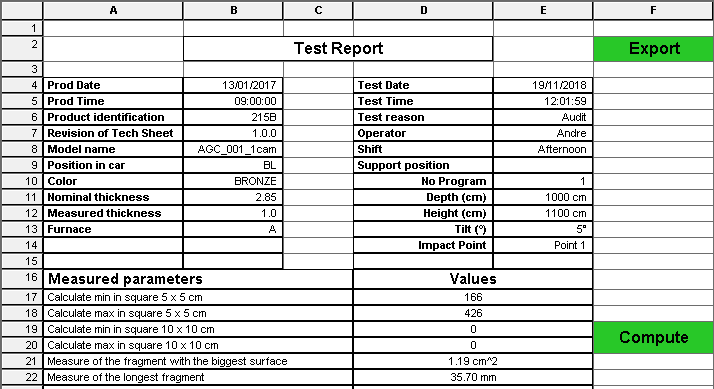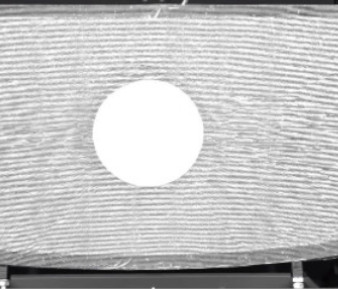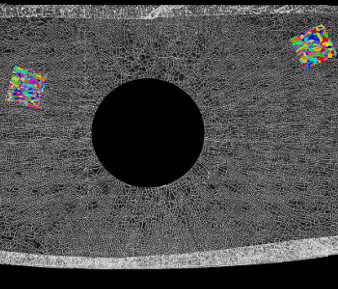Glass fragments characterization
This system is embedded in the product Optifrag, selled by Virelux.
Horizontal fringe and detection of minimum and maximum density areae
The Reactiv’IP team developped a software to detect and measure fragments on glasses caused by an impact. A screen projects fringes on the glass in order to enhance cracks by detecting phase hoppings. Measures describes the longest and biggest fragments, as well as areae with minimum and maximum density. Glasses can have more or less curved shapes, si that the process is done on on or three images.
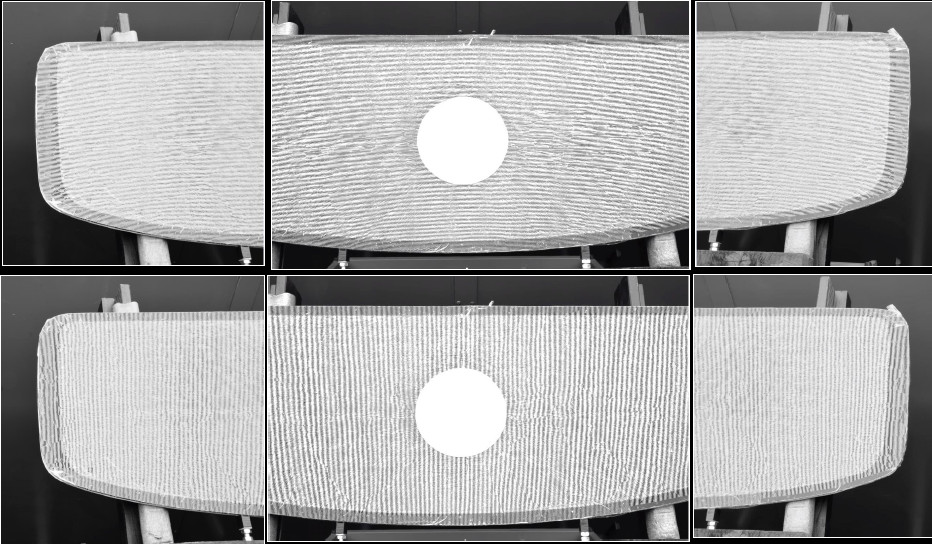
Successive steps
The application was realized with the IPSDK library framework. The first step consists on allowing the user to specify the glass model parameters. It includes geometry adjustments and image registration in the case of several cameras. During this step, the user also determines the occultation mask of the impact area.
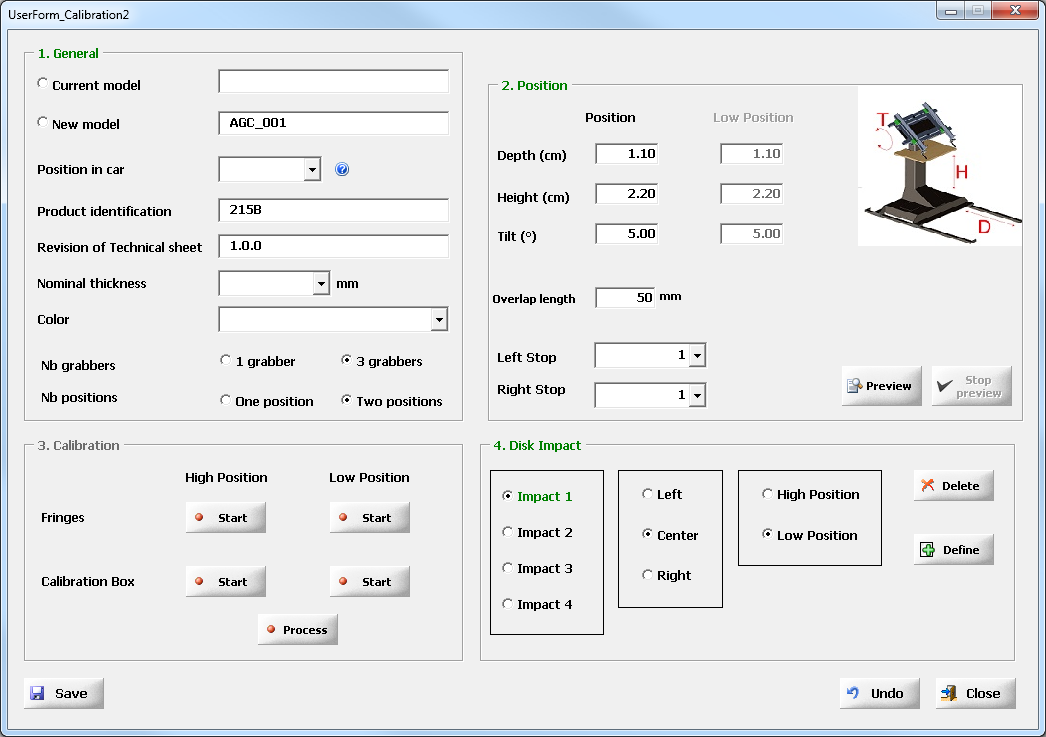
The second step consits on detecting and measuring fragments. Once the glass is correctly positionned, the user only need to choose the model in the interface and launch the process, which means :
- Compute the image phases and enhance cracks,
- Detect fragments,
- Compute the measure on fragments and searching the areae of maximum and minimum densities,
- Compute the overlap areae and display the results.
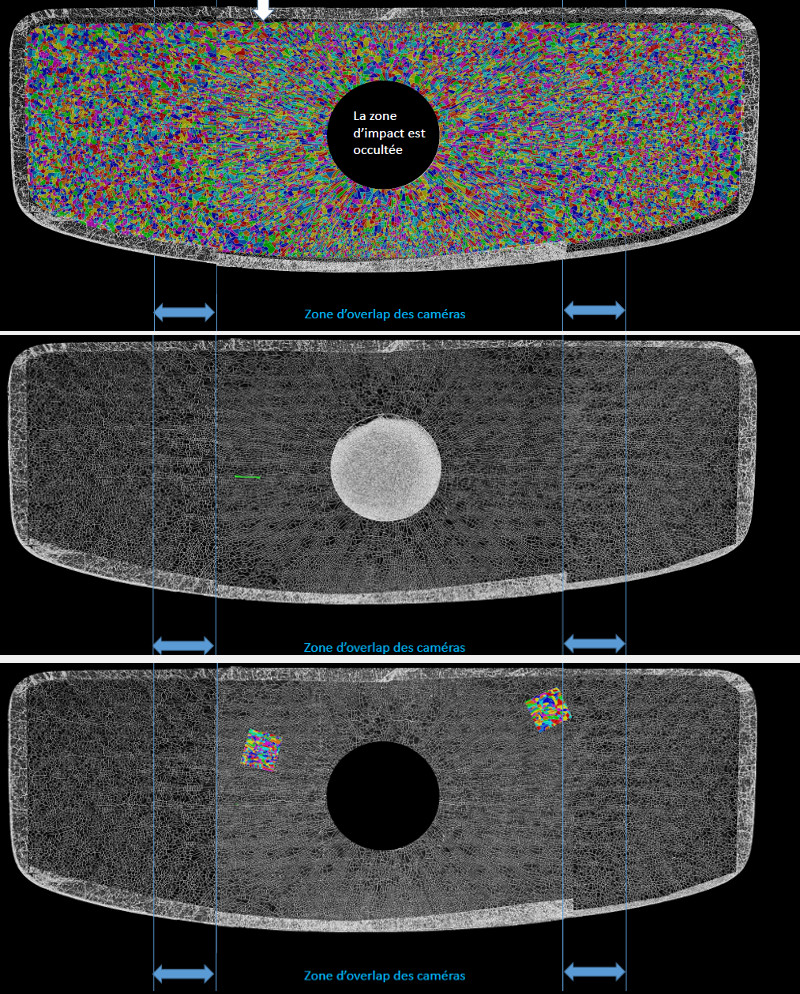
The user can then adjust the results if some fragments have not been separated or if some areae are over-segmented.
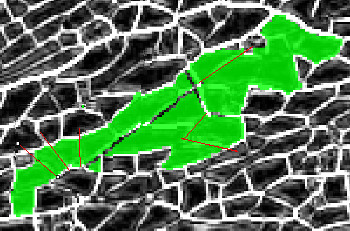
Results
Once the result is terminated, the application generates a report summarizing the measure.
